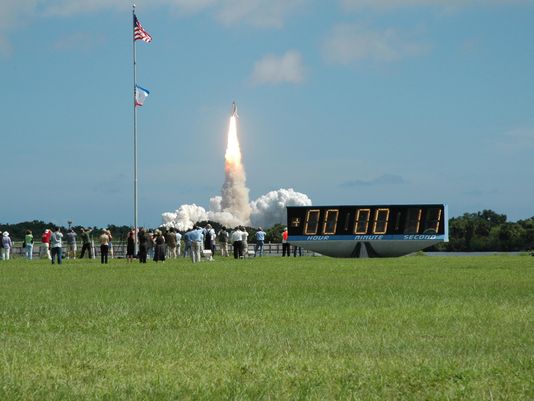Cape Canaveral, Florida (Florida Today) -- Time is running out on one of the world's most famous timepieces.
Within weeks, NASA plans to replace the digital countdown timer featured prominently in broadcasts and images of Kennedy Space Center launches ever since the second moon landing mission 45 years ago.
In place of the rectangular blue box that ticked down the hours, minutes and seconds remaining until liftoff, KSC plans to install a modern multimedia screen that can display various video streams, including a clock.
"It will be similar to large screen displays used in stadiums and Time Square," said KSC spokesman Mike Curie.
NASA hopes to unveil the $280,000 display in time for the Dec. 4 test launch of an unmanned Orion spacecraft from next door at Cape Canaveral Air Force Station.
With no other NASA launches scheduled before then, the vintage clock may have hit T-0 for the last time.
Overlooking the water in front of the Launch Complex 39 Press Site, the clock's location offers direct views of KSC's pads 39A and 39B — the sites of every Saturn V and space shuttle launch — and another Cape pad from which some NASA science spacecraft have blasted off on expendable rockets.
A nearby flagpole helped frame launch scenes with an American flag and, during shuttle launches, an orbiter flag.
Together the clock and flagpole occupy a spot on the National Register of Historic Places.
KSC could not immediately confirm the new display's make, model or dimensions. It is expected to be slightly larger than the current clock, which stands taller than a person and more than 20 feet across.
The cost includes a support base meeting current building codes. The entire setup will be designed to withstand extreme Florida weather.
Aside from the standard, 40-watt light bulbs that illuminate its digits, the Apollo-era clock uses 1960s circuitry that has deteriorated over time in the salty seaside climate, Curie said.
"It is not cost effective to continuously repair it," he said.
NASA plans to save the historic countdown clock or possible display at the KSC Visitor Complex.


